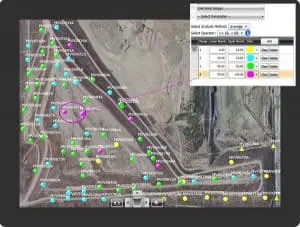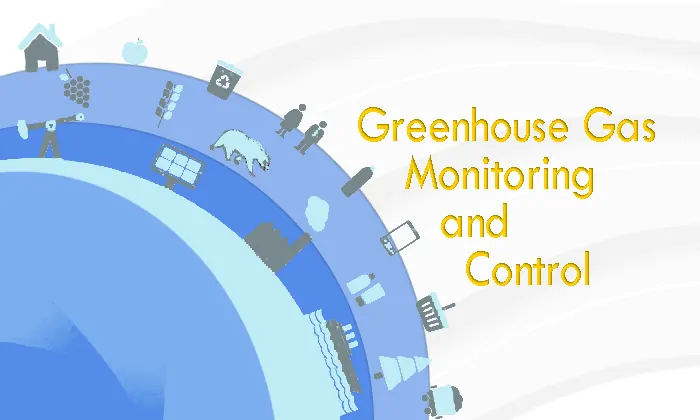

Read and share the full article by David Greene, PE, here.
EPA recently established expansive new air rules affecting MSW Landfills. Implementation of the new rules places new responsibilities on both the regulated community and regulators alike. However, some of these responsibilities are unclear and have created unresolved issues that should be addressed in close consultation now with your state/local regulatory authority.
For example, if a landfill is “new,” the facility is now subject to NSPS Subpart XXX, which is fully effective. A design capacity and NMOC emissions rate report should already have been submitted.
If NMOC emissions from a facility exceed 34 Mg/yr, then the landfill will need to submit a GCCS design plan within 12 months of the date of exceedance and install and operate within 30 months (no later than May 2019 for those triggering with the promulgation of the rule). If a landfill is an “existing emissions source,” it will be subject to the new EG rule (Subpart Cf).
Landfill owners should maintain close contact with their state/local regulatory authority regarding the status of the regulator’s state implementation plan, due by November 2017. That state implementation plan will prescribe the required compliance dates for an existing landfill, likely to be no later than the 2018/2020 time period. In either case, owners should become familiar with the rule and stayed tuned as compliance guidance evolves to address the unresolved issues.
Contact SCS Engineers to discuss the regulatory status in your state at , or call your local representative.
SCSeTools® gives you the ability to instantly map air leaks, vacuum distribution, wells that are “over pulling” and wells that are underutilized – valuable tools for every wellfield technician to maximize system performance beyond simple compliance tracking and reactive wellhead tuning.
As a field technician, you walk a fine line – tuning to a threshold, pulling as hard as you can, as safe as you can. When important data factors start to wander you need to troubleshoot quickly to keep collecting as much as gas as possible without over compensating and adjusting wellheads multiple times. SCSeTools® makes troubleshooting faster and more efficient by turning your data into maps identifying important conditions in the field and the wellheads that need tuning. Field technicians know how to balance the wellfield without killing bacteria and without diluting the gas.
A map of your field with your specific tuning range quickly shows data that are typically missed in reams of data. SCSeTools alerts you to these indicators using a map of each wellhead in the wellfield. Where you formerly needed months for these changes to become apparent, SCSeTools tells you at the touch of a button when a change began occurring and which wellheads are impacted. As a technician you know what you need to tune and which wellheads need your attention.

Using SCSeTools pick any parameter that the GEM collects and create custom ranges or use specified guidelines to quickly identify trends throughout the landfill. Tuning ranges can be adjusted to specific conditions found at individual landfills. Smooth a saw tooth collection pattern and learn from your data for maximum vacuum and maximum collection without risk.
…and as waste settles, it can have an effect on equipment,” according to Pat Sullivan of SCS Engineers in this ClimateWire article. As the U.S. EPA focuses on pushing landfill owners into cutting down on methane emissions some worry that a combination of tightening regulations and poor cost analysis might put some smaller landfills out of business.
LANDFILL EMISSIONS: Going to the dump? You might make electricity
Kavya Balaraman, E&E reporter
Reprinted from ClimateWire with permission from E&E Publishing, LLC. Copyright 2016.
An informative and complete discussion from Jeffrey L. Pierce of SCS Engineers, Energy Practice of siloxanes and landfill gas (LFG) utilization. Plus, presentations on the economics and performance of siloxane removal from biogas; advice on siloxane sampling, analysis and data reporting recommendations on standardization for the biogas utilization industry.
The unique nature of landfill decomposition and the demands of safety, environmental compliance, and energy recovery create a dynamic environment under which Landfill Gas (LFG) management systems perform. These conditions place long term stresses on system components and increasingly challenge the ability of operators to effectively and efficiently manage the collection and control of LFG in a cost effective manner.
This case study concerns an aging LFG system located in northern Virginia nicknamed the I-95 Landfill. Operation and maintenance had become onerous and expensive as the system aged. Plans to evaluate, redesign, and rebuild the system with the intention to simplify operation and optimize performance while reducing lifecycle operation and maintenance costs were implemented. This paper presents the site history of the I-95 Landfill along with the approach from system evaluation findings, the design recommendations, construction, and the lessons learned.
On June 1, 2016, the National Waste & Recycling Association (NWRA), the Solid Waste Association of North America (SWANA), and the Coalition for Renewable Natural Gas (RNG Coalition) provide comments on Pipeline Safety: Safety of Gas Transmission and Gathering Pipelines (FR20722) proposed rules to Mr. Mike Israni, Deputy Associate Administrator for Pipeline Safety – Field Operations at U.S. Department of Transportation. Comments by the three not-for-profits were made on behalf of the solid waste industry including companies, municipalities, and professionals.
The letter reflected the solid waste industry support for the efforts made by the Pipeline and Hazardous Materials Safety Administration (PHMSA) to ensure pipeline safety and included comments on the Advance Notice of Proposed Rulemaking, (ANPRM) as follows:
The revised definition for gathering line (onshore) as the basis for determining the beginning and endpoints of each gathering line requires further clarification. The definition remains too broad for applications that do not have the same level of risks since they are not accessible to the public.
PHMSA has elected not to propose rulemaking for landfill gas systems. However, it notes that pipelines that transport landfill gas away from the landfill to another facility are transporting gas and that PHMSA may consider this in the future.
The associations pointed out that the same rulemaking for landfill gas systems should apply to all forms of biogas that are collected and managed in a similar manner to landfill gas. Also noted was that low-pressure gas lines delivering biogas off-site to a dedicated end user need not be considered for further regulation as they do not present the same level of risk that natural gas or other high-pressure gas lines do. Landfill gas/biogas systems fall under federal, state and local regulators. Because landfill gas/biogas systems are regularly inspected for safety, generally use plastic piping, and do not present a substantial risk to the public the Associations feel that it is not necessary to consider additional regulation.
Contact NWRA, SWANA, RNG Coalition or SCS Engineers for more information.
Question: I have a small oxidation event at my landfill and am continually testing for carbon monoxide (CO) in the surrounding landfill gas (LFG) extraction wells. Using colorimetric tubes, I am monitoring the readings which range from 5-10 parts per million (ppm). Is there an accepted standard for background carbon monoxide in LFG? Moreover, how much inaccuracy is expected using the colorimetric tube testing?
Answer: Carbon monoxide (CO) can be found in small quantities even when there is no landfill fire. If your concern is landfill fire, most reputable resources state that a landfill fire generates readings of at least 100 ppm CO and more typically in the 500-1000 ppm range with 1000 ppm a reliable indicator that a landfill fire event may be present.
CO readings on colorimetric tubes are inherently less accurate and tend to run higher than laboratory results. Colorimetric tubes do provide value as a real-time indicator versus subsequent lab results, and can be used as an index reading, calibrated by lab results later. If you’ve had a landfill fire event before, with CO levels greater than 100 ppm, the lab confirmed 5-10 ppm CO could be residual left over from the earlier event.
Although some people believe that the presence of CO at almost any level is an indicator of landfill fire, recent laboratory tests show that CO can be generated at values up to and over 1000 ppm by elevating refuse temperatures without the presence of combustion (fire). Other tests have shown that high values of CO are found in some landfills with no current landfill fire and no indication of a past landfill fire. This information supports that it is possible that Elevated Temperature (ET) Landfills can have CO levels over 1000 ppm CO without the presence of combustion or landfill fire.
In the end, CO can be an indicator of landfill fire, but not always, as described here. Low methane, high carbon dioxide, and even landfill temperatures above 131 degrees F may or may not be indicators of past or current landfill fire. Physical indicators of a landfill fire may include rapid settlement in a localized area, cracks and fissures, smoke and flame, melted landfill gas system components, and char on the inside of LFG headers and blower/flare station components such as a flame arrester. However, most of these indicators can occur at ET landfills as well without the presence of fire or combustion.
A professional landfill gas engineer is needed to assess these conditions as a whole, and make a judgment on the underlying driver, condition, and resolution.
Have a question for our SCS Professional Engineers or Field Staff? Just ask here.
Landfill and Landfill Gas Services at SCS Engineers.
SWANA Webinar, Evaluating Impacts from LFG in a Litigation Setting, by Pat Sullivan, SCS Engineers posted with our articles and papers for viewing or download. Click here.
Learn more about Pat Sullivan, REPA, CPP, BCES.
DDC Journal recently published an interesting article by Pat Sullivan, “Developing power plants that reduce environmental impacts.” http://viewer.zmags.com/publication/097d62a6#/097d62a6/24
Pat Sullivan, BCES, CPP, REPA, is a Senior Vice President of SCS Engineers and our National Expert on the Landfill Clean Air Act and the New Source Performance Standard (NSPS). Mr. Sullivan has over 25 years of environmental engineering experience, specializing in solid and hazardous waste-related issues.

SCS is a pioneer in our nation’s efforts to reduce GHG emissions in order to combat global warming. We proactively pursue the development of markets in which major sources of methane (e.g., oil and gas industry, landfills, dairies, etc.) can generate and sell GHG credits by voluntarily installing methane recovery systems and selling the methane as fuel.
Methane is 25 times more powerful than carbon dioxide in terms of its greenhouse effect. Capturing and destroying these emissions can have significant environmental benefits. Simply destroying methane via power generation or sequestration can diminish its GHG potential by 95 percent. Even greater benefits are available if the methane is used as renewable energy in order to offset natural gas or coal-fired power generation.